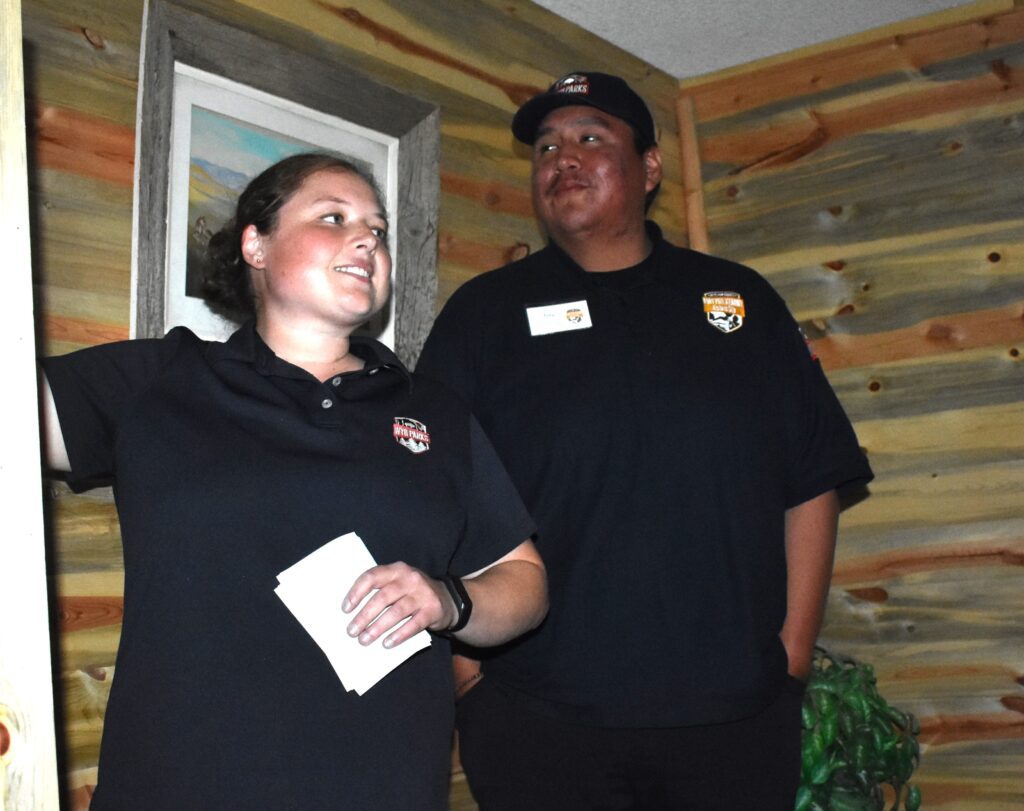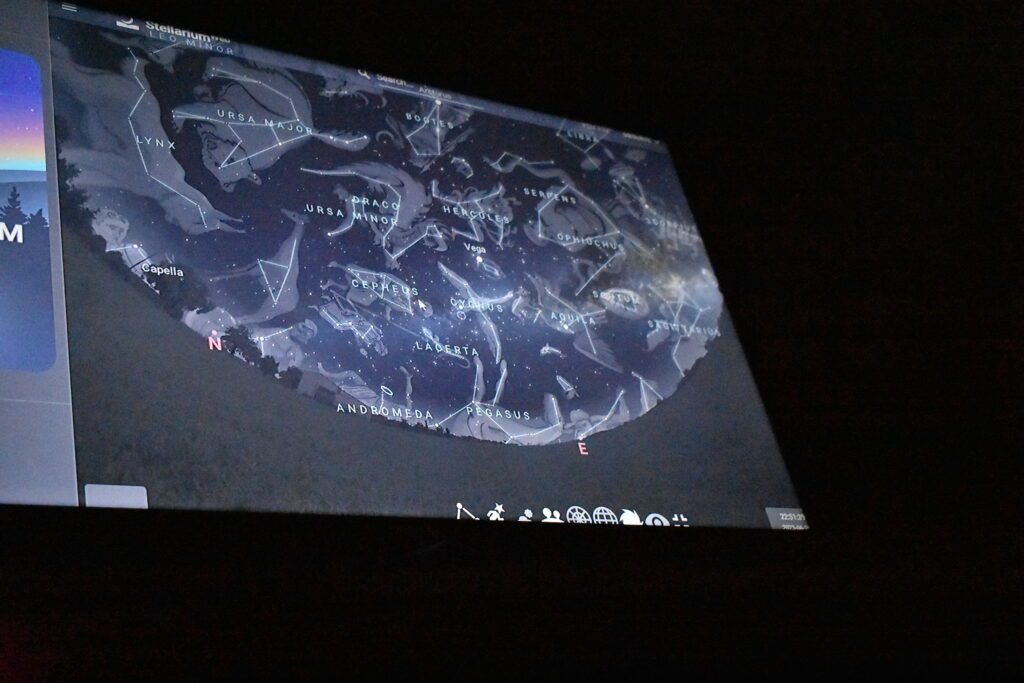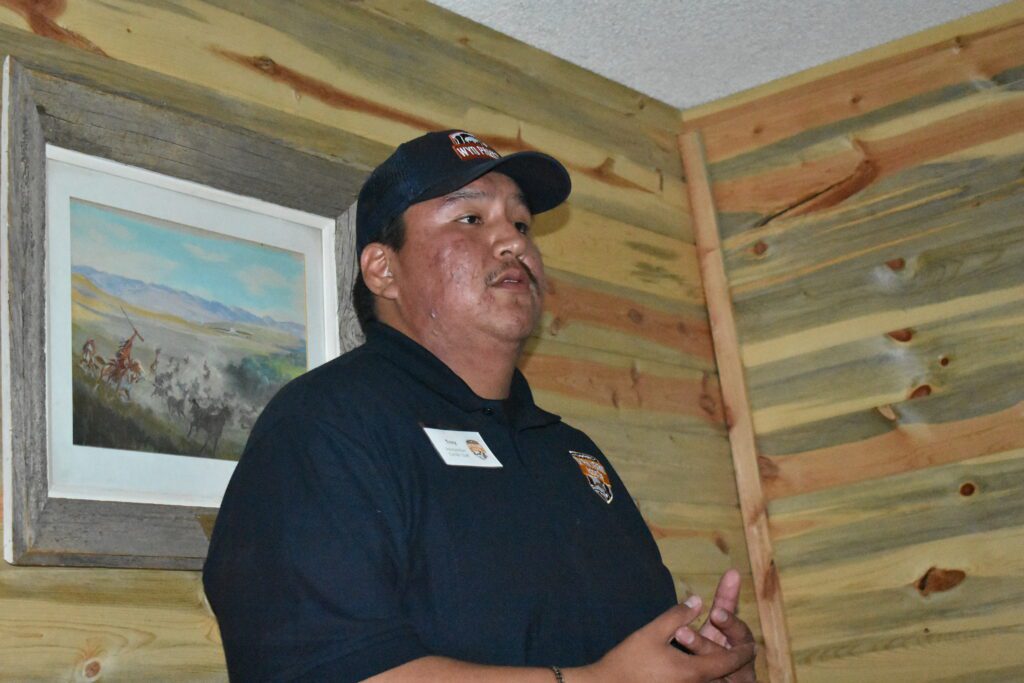News
Night Sky at Fort Phil Kearny Program

A good crowd attended the Night Sky Stories program about the constellations on June 29 at Fort Phil Kearny. Ancient Greek and the Native American constellation tales were the feature of the talk.
Linley Mayer, Interpretative Ranger, Fort Phil Kearny, talked about the Ptolemy’s most recognizable Greek constellations that can be seen at Fort Phil Kearny.

Trey Wolf Black, one of the Native American Interpretative Rangers at the fort, talked about some of the Northern Cheyenne constellation stories.
The night sky is filled with thousands of dazzling objects that have sparked imaginations for thousands of years. Using the Stellarium App projected on a screen in the Interpretive Center, the constellations come to life as their stories were told.
Mayer added that constellations are significant in many different cultures, and that constellations are a group of stars that looks like a particular shape in the sky and have been given a name.
On the Stellarium App, Mayer said that the sky could be set for whatever time and location one wanted, to see exactly what the sky would look like at a certain time and place. In addition to the Greeks, the app has Mongolian, Chinese, Aztec and other culture’s constellation stories.
Mayer said that constellations are a grouping of stars that have a characteristic and are given a name. She added that there are some that can be seen year around, and some that are seasonal.

One familiar grouping of stars are the three that make up Orin’s belt, and Linley talked about the Orion’s myth.
It follows to Sirius, a large, bright star, which is known as the “Dog Star” and is a part of the constellation, Canis Major, Orion’s dog.
She pointed out the Big and Little Dippers, which are very well-known star clusters. She said the Little Dipper pours into the Big Dipper.
The Big Dipper also guides you to Polaris, which is the North Star. Due to the fact that Polaris is located close to the point in the sky of the earth’s north rotational axis, it remains stationary in the sky while the other stars move as the earth rotates. Polaris is used in navigation, and it is a reliable way to find the direction of north.
Although they are well known star clusters, they are not actually constellations. The Big Dipper is a part of the Ursa Major, or the Big Bear Constellation, and the Little Dipper is a part of the Ursa Minor, “Little Bear”
She talked about how in Greek mythology, Zeus had a girlfriend, Callisto, but when his wife, Hera sees them together, Zeus turns Callisto into a bear and sends her into the night sky where she becomes the constellation, Ursa Major. Ursa Minor is her son, Arcas.

Trey Wolf Black took over the program and talked about the Northern Cheyenne story about the big dipper, saying there are seven stars in the big dipper and that seven is a good number for the Cheyenne people.
He continued the story, saying that then the youngest brother asked for a buffalo to come so they would have food. When the buffalo saw how beautiful the sister was, he wanted to marry her as well. But she would not marry him, and the buffalo came and tore up the beautiful tipis, wiped out the camp and everything they owned. The sister was upset, and the brothers ran out of bullets to shoot are the buffalo. They only had sacred arrows left.
It took the seven brothers and the sister up above the clouds and they became the seven stars in the Big Dipper.
The audience requested more Native American stories, so Wolf Black told some other Cheyenne stories about the night sky. Mayer closed the program by saying that it was interesting to learn about other stories about the constellations.
Then attendees were invited to pick some stars and create a story about the stars for themselves or their family.

